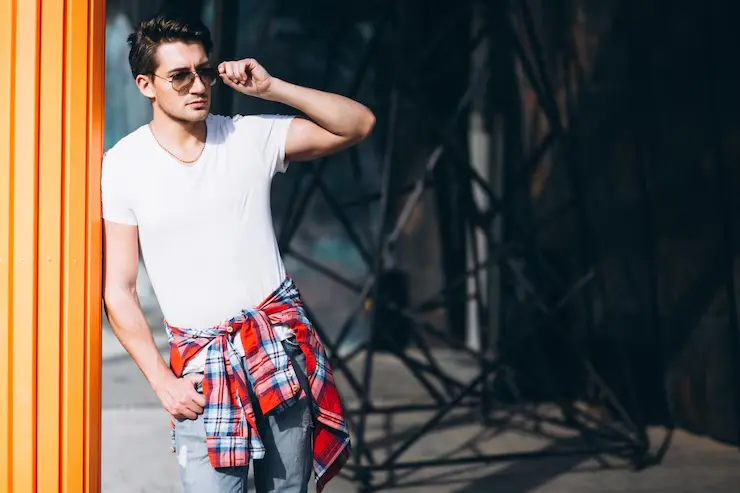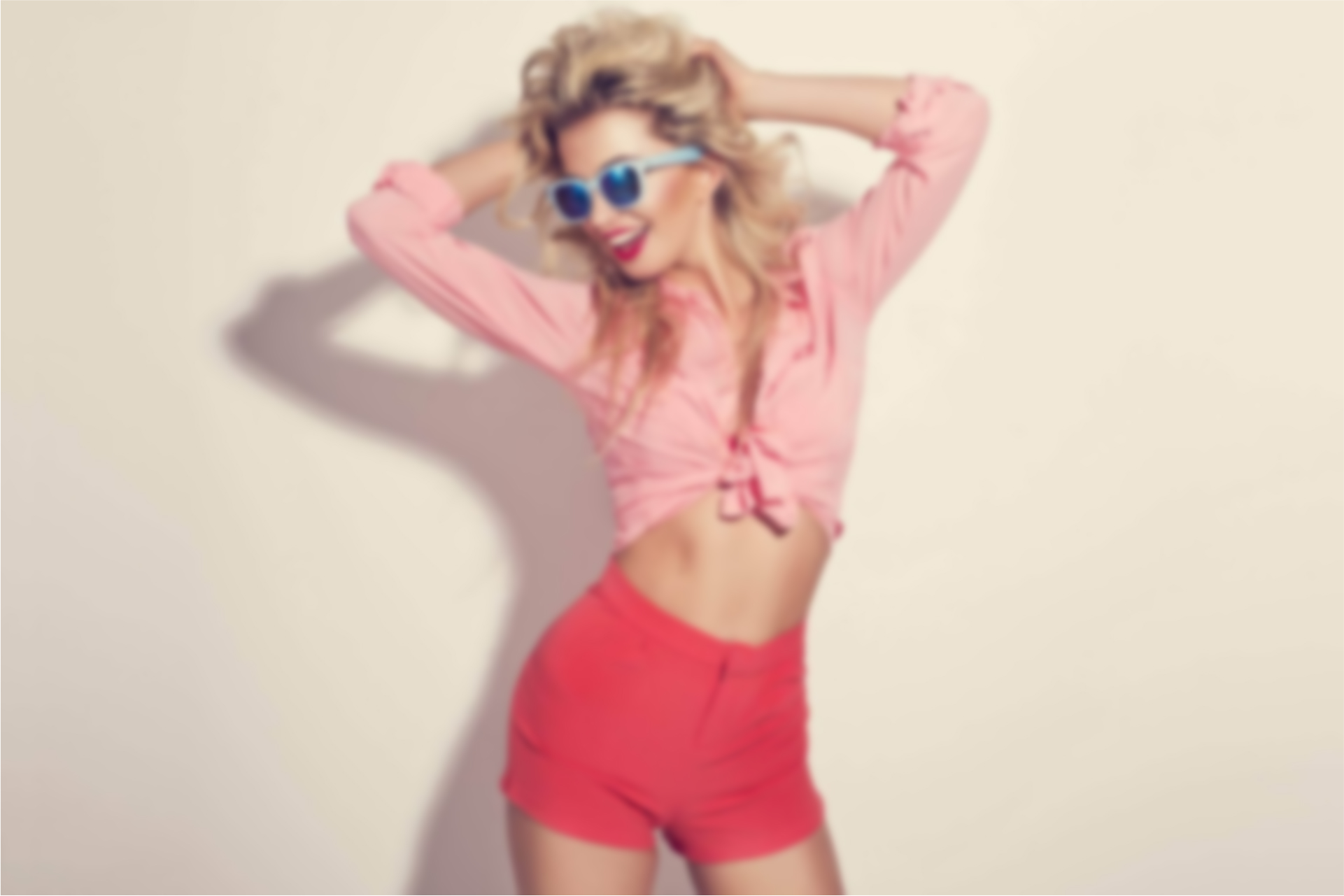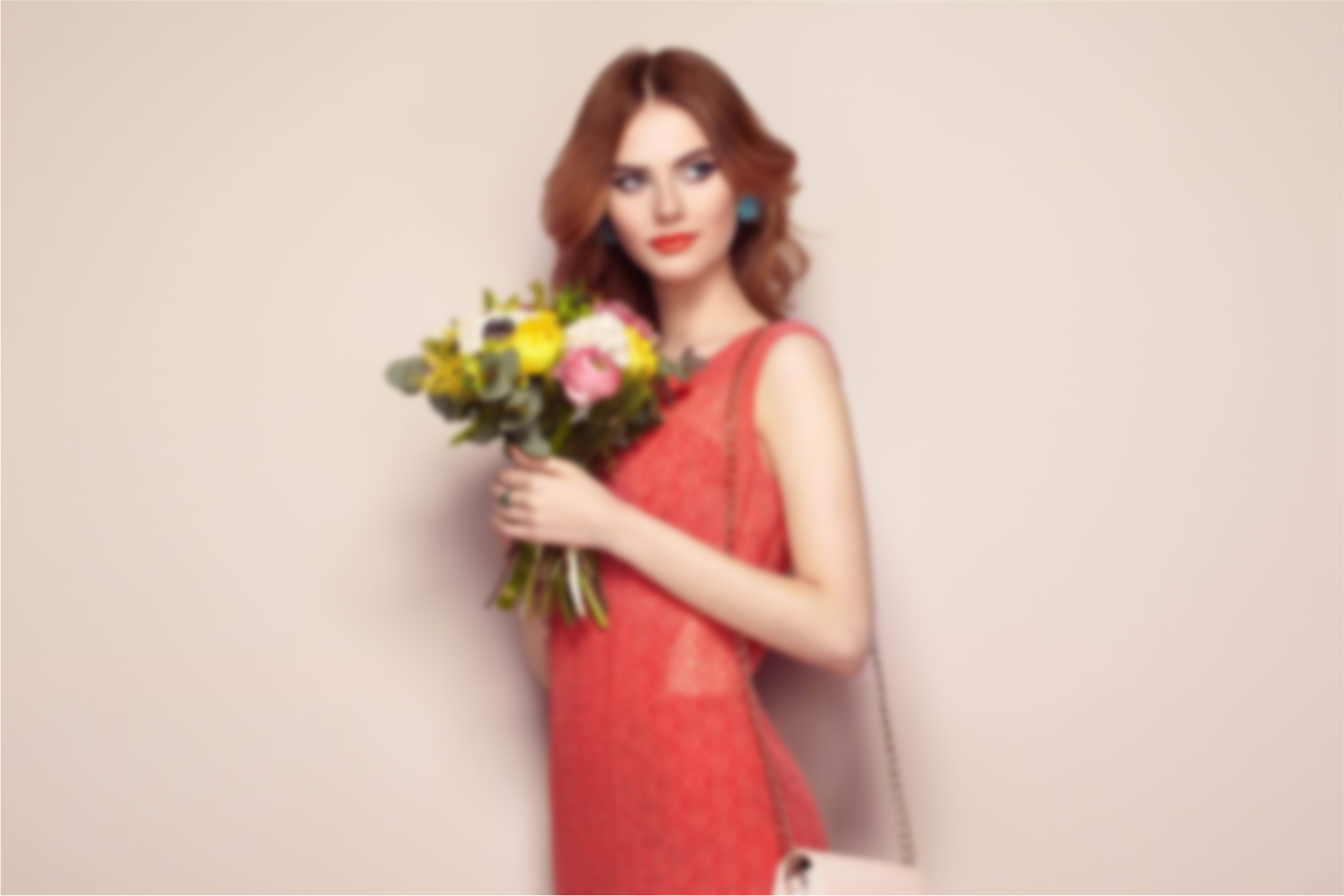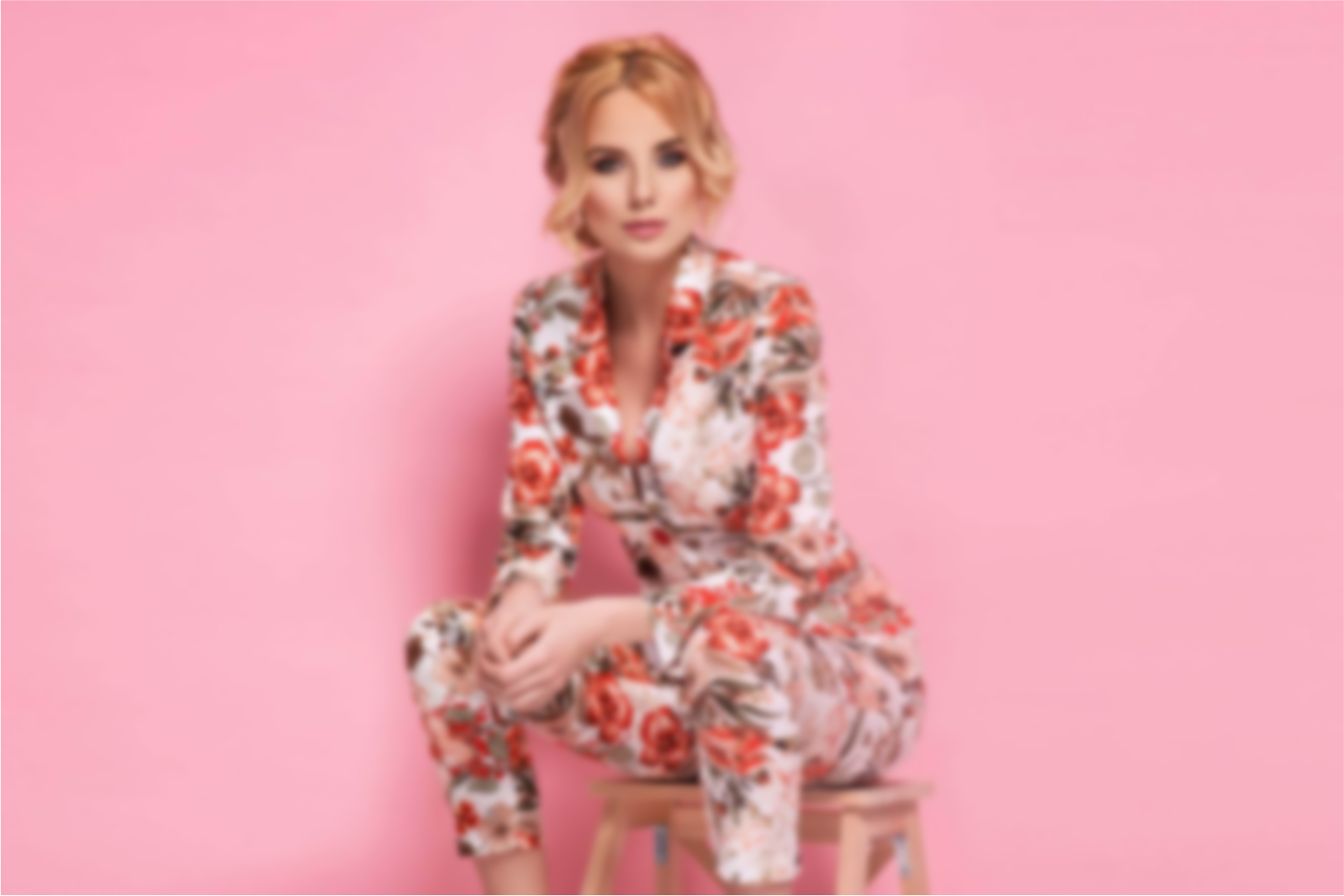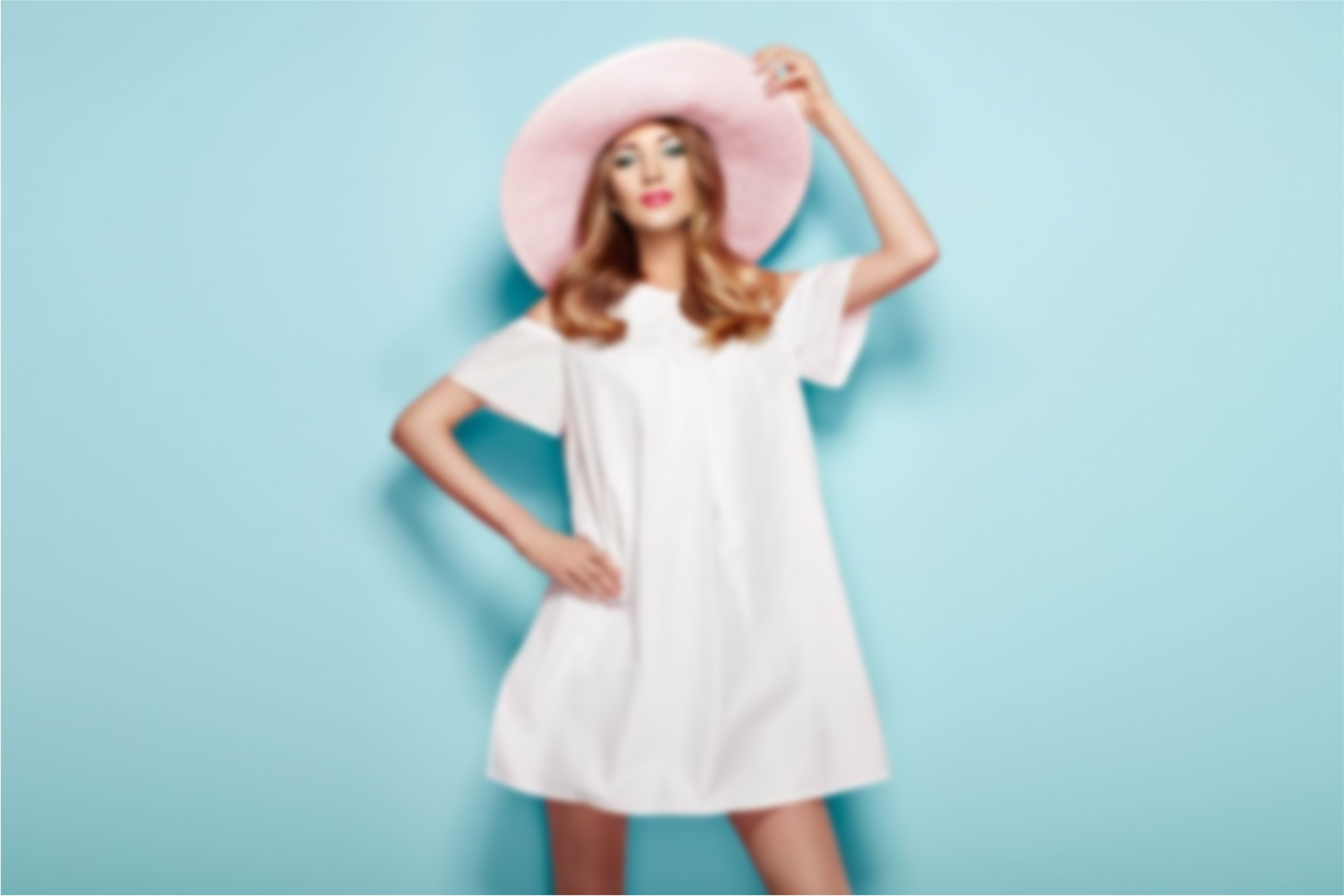Discover the Best Basic T-shirts For Men sourced by Dress Merchant, your trusted apparel buying agent. As a leading sourcing partner for garments manufacturers and exporters, we ensure top-quality, comfortable, and affordable basic tees tailored to your brand’s needs. Choose Dress Merchant for reliable sourcing, competitive pricing, and a commitment to quality in every stitch. Get in touch today to elevate your men’s basics collection with premium sourcing solutions.
Thank you for reading this post, don't forget to subscribe!1. Understanding the Anatomy of a Premium Basic Tee
A truly exceptional basic t-shirt isn’t just a piece of fabric; it’s a meticulously crafted garment designed for comfort, durability, and timeless appeal. Discerning the difference between a throwaway tee and a lasting investment lies in understanding its fundamental components.
1.1 Fabric as the Foundation of Feel and Function
The material composition of a basic t-shirt is paramount, directly influencing its softness, breathability, and how it drapes on the body. While cotton reigns supreme, the type of cotton and its processing significantly alter the garment’s quality. Long-staple cotton varieties like Pima or Supima are renowned for their exceptional softness, strength, and resistance to pilling, making them ideal for a luxurious feel.
Combed cotton offers a smoother, more refined texture by removing shorter fibers. Beyond pure cotton, blends with modal or rayon introduce a silky drape and enhanced moisture-wicking properties, while a touch of elastane (spandex) provides stretch and shape retention, preventing the dreaded sag after multiple washes. The fabric’s weight, often measured in GSM (grams per square meter), also plays a role; lighter tees are perfect for warm weather or layering, while heavier ones offer a more substantial feel and increased durability.
1.2 The Art of Stitching and Construction
Beyond the fabric, the quality of a t-shirt’s construction is a silent testament to its longevity. Expertly executed stitching, particularly along the seams, collar, and hem, prevents unraveling and maintains the shirt’s structural integrity. Flatlock seams, for instance, reduce bulk and chafing, enhancing comfort. Reinforced necklines, often with a subtle ribbing, resist stretching and maintain their shape, a common point of failure in lesser quality tees.
Attention to detail in areas like the shoulder seams, which should ideally align perfectly with the natural curve of your shoulder, speaks volumes about the manufacturing precision. A well-constructed basic tee will also feature consistent sizing across its range, ensuring that a “medium” from a reputable brand will always fit reliably.
1.3 The Enduring Appeal of Timeless Design
While “basic” might imply simplicity, a truly excellent basic t-shirt embodies a refined design that transcends fleeting trends. This often means a clean, minimalist aesthetic devoid of excessive branding or graphics. The classic crew neck, with its universally flattering round neckline, remains a perennial favorite, while the V-neck offers a slightly more open feel, ideal for layering or to subtly elongate the neck.
The sleeve length and opening are also crucial; a well-proportioned sleeve will end around the mid-bicep and offer a gentle hug without feeling constrictive or overly baggy. The overall silhouette should allow for comfortable movement while still presenting a refined, put-together appearance, rather than looking shapeless or oversized.
2. Identifying Your Ideal Fit: A Tailored Approach to T-Shirt Selection
Finding the perfect fit for a basic t-shirt is akin to finding a second skin; it should complement your physique without restriction or excessive bagginess. Different fits cater to various body types and personal preferences, and understanding these nuances is key to building a versatile wardrobe.
2.1 The Classic Regular Fit: Universal Comfort
The regular fit t-shirt is the quintessential silhouette, offering a relaxed yet polished drape that suits most body types. It provides ample room through the chest and waist without appearing boxy, falling straight down the torso.
The sleeves are neither too tight nor too loose, allowing for a comfortable range of motion. This fit is the workhorse of any wardrobe, suitable for everyday casual wear, layering under jackets or shirts, and even for light physical activity. Its versatility makes it a reliable choice for those who prioritize comfort and a timeless aesthetic.
2.2 The Streamlined Slim Fit: A Modern Silhouette
For those who prefer a more contemporary and tailored appearance, the slim fit t-shirt is an excellent choice. This cut tapers slightly at the waist and chest, creating a more streamlined profile that accentuates the natural contours of the body. While it’s closer fitting than a regular fit, a good slim fit t-shirt should never feel restrictive or tight, allowing for comfortable movement.
It’s particularly flattering for athletic builds or individuals who prefer a cleaner, more defined silhouette. When trying on a slim fit, ensure there’s no pulling across the chest or armpits, and that the fabric doesn’t stretch excessively, which can compromise its lifespan.
2.3 Relaxed and Oversized: Embracing Effortless Style
In recent years, the relaxed and oversized fit t-shirts have gained significant traction, especially within streetwear and casual fashion circles. These styles offer a more laid-back, comfortable aesthetic, providing greater room through the body and sleeves. A relaxed fit offers a slightly looser drape than a regular fit, while an oversized fit takes this a step further, creating a distinctly baggy and drapey look.
While these fits are inherently more casual, they can be styled effectively with slim-fit bottoms to create a balanced silhouette. The key to pulling off a relaxed or oversized tee is to ensure the shoulders still sit correctly and the length isn’t excessively long, otherwise, it can appear sloppy rather than intentionally relaxed.
2.4 The Importance of Sleeve and Hem Length
Beyond the overall body fit, the length of the sleeves and the hem of a basic t-shirt significantly impact its appearance. Ideally, short sleeves should end around the mid-bicep, allowing for a clean, classic look. If they’re too short, they can appear dated or restrict movement; if too long, they can look sloppy.
The hem of a basic t-shirt should generally fall around the middle of your fly, or just below your beltline, allowing you to comfortably reach overhead without exposing your midsection. For tucking, a slightly longer hem might be preferred, but for most casual wear, an untucked tee should sit neatly on the hips without excessive bunching.
3. The Material Matrix: Decoding T-Shirt Fabrics
The fabric of a basic t-shirt dictates not only its feel and drape but also its durability, breathability, and suitability for different climates and activities. Understanding the common materials and their unique properties is crucial for making informed purchasing decisions.
3.1 Cotton: The Uncontested King of Comfort
Cotton remains the most popular material for basic t-shirts, lauded for its softness, breathability, and natural feel. However, not all cotton is created equal. Standard cotton is versatile and widely available, offering good value. Ring-spun cotton undergoes a process that twists and thins the cotton strands, resulting in a softer, smoother, and more durable fabric.
Combed cotton takes this a step further, removing short fibers and impurities to create an even softer and more refined material. For the ultimate in cotton luxury, Pima and Egyptian cotton are renowned for their extra-long staple fibers, which produce exceptionally strong, soft, and lustrous fabrics that resist pilling and maintain their shape beautifully over time. Organic cotton, grown without harmful pesticides or chemicals, offers an eco-friendly alternative with the same inherent comfort.
3.2 Blended Fabrics: Enhancing Performance and Durability
While 100% cotton is a classic choice, many modern basic t-shirts incorporate blends to enhance specific properties. Cotton-polyester blends, often referred to as “poly-cotton,” offer a balance of cotton’s softness and breathability with polyester’s durability, wrinkle resistance, and faster drying time. These blends are often more resistant to shrinkage and fading than pure cotton.
Triblends, typically a combination of cotton, polyester, and rayon, take comfort and drape to another level, offering an incredibly soft, lightweight, and fluid feel. Rayon, a semi-synthetic fiber derived from wood pulp, contributes a silky texture and excellent drape. For added stretch and shape retention, a small percentage of elastane (spandex) is often incorporated, particularly in slim-fit or athletic-oriented tees, providing freedom of movement and preventing the shirt from losing its form.
3.3 Beyond Cotton: Exploring Niche Materials
While cotton and its blends dominate the basic t-shirt market, other materials offer unique characteristics. Linen, derived from the flax plant, is highly breathable and absorbent, making it an excellent choice for hot and humid climates. It has a distinctive textured weave and softens with each wash, developing a unique character over time. While less common for truly “basic” tees, some brands offer hemp t-shirts, which are known for their exceptional durability, natural antimicrobial properties, and sustainable cultivation.
Modal, another semi-synthetic fiber made from beechwood pulp, is celebrated for its incredible softness, smooth drape, and excellent moisture absorption, often feeling even softer than cotton. These alternative materials provide diverse options for those seeking specific performance or textural qualities in their basic tees.
4. Renowned Brands for Enduring Basic T-Shirts
The market for basic t-shirts is vast, but certain brands have consistently earned a reputation for quality, durability, and a commitment to producing wardrobe staples that stand the test of time. Investing in these brands often means receiving a superior product that will last longer and look better.
4.1 Uniqlo: Accessible Quality and Innovation
Uniqlo has become a global powerhouse in the realm of high-quality basics, and their t-shirts are a prime example. Known for their meticulous attention to fabric technology and fit, Uniqlo offers a wide array of basic tees, from their supremely soft Supima Cotton line to their innovative AIRism collection, designed for enhanced breathability and moisture-wicking. Their minimalist design philosophy ensures versatility, making their tees suitable for countless outfits.
Uniqlo’s commitment to consistent sizing and durable construction at an accessible price point has made them a go-to for building a foundational wardrobe of reliable basics.
4.2 Everlane: Ethical Production and Transparent Pricing
Everlane has carved a niche by prioritizing ethical manufacturing practices and transparent pricing. Their basic t-shirts are crafted from high-quality materials, often organic cotton, and produced in factories with fair labor standards.
Everlane’s aesthetic leans towards clean, contemporary designs and a focus on lasting staples rather than fleeting trends. Their tees are known for their soft hand-feel, consistent fit, and admirable durability, making them a conscious choice for consumers who value both quality and responsible production. They offer a range of fits, from classic to more relaxed, catering to diverse preferences while upholding their core values.
4.3 Buck Mason: Vintage-Inspired American Craftsmanship
Buck Mason has cultivated a loyal following for its vintage-inspired approach to American basics, and their t-shirts are no exception. They often utilize premium Pima cotton, resulting in incredibly soft and resilient fabrics.
Their designs often feature a slightly heavier weight, evoking a classic, substantial feel, and their fits are typically relaxed yet refined. Buck Mason focuses on creating garments that will age beautifully, developing character with each wear and wash. While a higher price point than some mass-market brands, their commitment to quality materials and timeless design positions them as an investment for those seeking durable, classically styled basic tees.
4.4 James Perse: Luxury and Understated Sophistication
For those seeking the pinnacle of luxury in basic t-shirts, James Perse offers an unparalleled experience. The brand is synonymous with effortless, sophisticated style, and their tees embody this philosophy. Crafted from exceptionally soft and fine cottons, often with a subtle slub texture, James Perse t-shirts offer an exquisite drape and a supremely comfortable feel.
Their designs are minimalist and understated, focusing on perfect proportions and a flattering silhouette. While a significant investment, James Perse tees are designed to be cherished wardrobe staples that provide a touch of refined luxury to everyday wear, proving that even a basic garment can achieve elevated status.
5. Styling the Staple: Versatile Looks with Basic T-Shirts
The true power of a basic t-shirt lies in its unparalleled versatility. Far from being relegated to just loungewear, a well-chosen basic tee can be the foundation for an extensive range of outfits, effortlessly adapting to various occasions and aesthetics.
5.1 Casual Cool: The Everyday Ensemble
The most common and arguably most iconic way to wear a basic t-shirt is as part of a casual everyday outfit. A perfectly fitted crew neck in a neutral color – white, black, grey, or navy – paired with well-fitting jeans is a timeless combination that exudes effortless cool.
For warmer weather, swap jeans for chinos or tailored shorts. Completing the look with clean sneakers or simple leather loafers maintains the relaxed yet put-together vibe. This combination is ideal for running errands, weekend outings, or informal gatherings, showcasing the t-shirt’s ability to create a polished look without trying too hard.
5.2 Elevated Leisure: Smart-Casual Sophistication
To elevate a basic t-shirt beyond purely casual territory, strategic layering and complementary pieces are key. Wearing a crisp white or black t-shirt under a tailored blazer instantly transforms the look, creating a smart-casual ensemble suitable for date nights, semi-formal events, or even creative office environments. Pair this with dark wash jeans, chinos, or dress trousers for a refined contrast.
The blazer adds structure and formality, while the t-shirt maintains an approachable, modern edge. Similarly, a basic tee can be layered under an open button-down shirt – a linen shirt for summer, or a flannel for cooler months – adding depth and texture to the outfit.
5.3 Layering Mastery: Building Dynamic Outfits
The basic t-shirt excels as a foundational layer, providing comfort and a clean base upon which to build more complex outfits. In colder months, a long-sleeve basic tee can be worn under sweaters, cardigans, or even heavier shirts, providing an extra layer of warmth without bulk. For a stylish transitional look, a short-sleeve basic t-shirt can be worn under a light jacket, such as a denim jacket, bomber jacket, or a utility jacket.
The t-shirt’s simplicity allows the outer layer to take center stage, while still providing a comfortable and well-proportioned base. Experimenting with contrasting colors or subtle tonal variations between layers can add visual interest without overwhelming the overall aesthetic.
5.4 Accessorizing for Impact: Personalizing Your Tee
While the basic t-shirt is designed for simplicity, thoughtful accessorizing can significantly enhance its appeal and reflect personal style. A quality watch, a subtle chain necklace, or a well-chosen belt can add touches of refinement. For casual looks, a stylish cap or a pair of sunglasses can complete the ensemble. The key is to choose accessories that complement the minimalist nature of the t-shirt rather than overpowering it.
The basic tee acts as a clean canvas, allowing your accessories to make a statement without competing for attention, enabling you to express your individuality through subtle yet impactful details.
6. The Environmental Footprint: Sustainable Choices in T-Shirt Production
The fashion industry has a significant environmental impact, and basic t-shirts, due to their widespread consumption, contribute to this. Being an expert content writer, it is important to address this critical issue and highlight sustainable options for responsible consumer choices.
6.1 Water Consumption in Cotton Cultivation
The cultivation of conventional cotton is notoriously water-intensive, requiring vast amounts of fresh water, especially in arid regions. Estimates suggest that producing a single cotton t-shirt can require thousands of liters of water, placing immense strain on local water resources. This high water footprint is a major environmental concern, contributing to water scarcity and degradation in many cotton-growing areas.
Consumers can mitigate this impact by opting for organic cotton, which typically uses less water due to healthier soil management practices, or by choosing t-shirts made from recycled materials, which significantly reduce the demand for virgin fibers.
6.2 Pollution from Dyes and Finishing Processes
The dyeing and finishing stages of t-shirt production are major sources of water pollution. Conventional dyeing processes often involve harsh chemicals and release toxic wastewater into rivers and streams, impacting aquatic ecosystems and human health in surrounding communities.
Furthermore, the chemicals used in various finishing treatments, such as anti-wrinkle or stain-resistant coatings, can also have detrimental environmental effects. Seeking out brands that utilize eco-friendly dyes, closed-loop water systems, or certifications like OEKO-TEX Standard 100 or bluesign can help ensure that the t-shirt production process minimizes its chemical footprint and water contamination.
6.3 Microplastic Release from Synthetic Blends
While synthetic blends like polyester and nylon offer performance benefits, they pose a significant environmental challenge: microplastic pollution. Every time garments made from these materials are washed, tiny plastic fibers shed and enter wastewater systems, eventually making their way into oceans and other natural environments. These microplastics are ingested by marine life and can enter the food chain, with long-term ecological and health implications. For basic t-shirts, choosing natural fibers like 100% cotton, linen, or hemp can help reduce microplastic shedding. When synthetic blends are desired, looking for innovative recycled polyester options can contribute to a more circular economy and reduce the demand for new plastics.
6.4 Waste Generation and Textile Landfills
The phenomenon of “fast fashion” has led to an unprecedented increase in textile waste. Basic t-shirts, being affordable and frequently replaced, contribute significantly to this problem. Millions of tons of clothing end up in landfills each year, where synthetic materials can take hundreds of years to decompose, and even natural fibers can release greenhouse gases as they break down anaerobically.
Supporting brands committed to circularity, offering take-back programs for old garments, or investing in higher quality basic tees that last longer reduces the frequency of replacement and overall waste. Repairing, reusing, and recycling t-shirts are also crucial steps in minimizing their environmental impact at the end of their life cycle.
7. The Art of the Perfect Fit: A Detailed Guide to T-Shirt Sizing
Achieving the ideal fit for a basic t-shirt is arguably the most critical factor in how it looks and feels. A well-fitting tee can elevate your entire appearance, while a poorly fitting one can undermine even the most expensive garment. This section provides a granular look at how to assess the fit of a basic t-shirt across key areas.
7.1 Shoulder Seams: The Defining Indicator
The shoulder seams are the most crucial indicator of a t-shirt’s fit. Ideally, they should sit precisely at the very edge of your shoulder, where your deltoid (shoulder muscle) begins to curve down your arm. If the seam extends past this point and hangs down your bicep, the t-shirt is too large, creating a sloppy, ill-fitting appearance.
Conversely, if the seam rides up towards your neck or traps your shoulder, the t-shirt is too small, restricting movement and causing uncomfortable pulling. Paying close attention to where these seams fall will immediately tell you if the garment is the right size for your frame.
7.2 Chest and Torso: The Right Amount of Drape
For the chest and torso area, a well-fitting basic t-shirt should skim your body without being overly tight or baggy. You should be able to pinch about one to two inches of fabric on either side of your chest without the shirt feeling stretched or pulling across your pecs. If the fabric is taut and shows every contour of your chest, it’s too small.
If there’s excessive fabric gathering around your waist or creating a “tent-like” appearance, it’s too big. The t-shirt should gently follow the natural lines of your body, offering comfort and freedom of movement without looking shapeless or like a second skin.
7.3 Sleeve Proportions: Length and Opening
The sleeves of a basic t-shirt play a significant role in its overall aesthetic. For short-sleeve tees, the ideal length typically falls around the mid-bicep. This length is universally flattering and proportionate. If the sleeves are much shorter, they can appear dated; if they extend too close to the elbow, they can look oversized or unkempt. The sleeve opening should be snug but not restrictive, gently hugging your arm without feeling tight or leaving a visible imprint.
There should be no excess fabric flapping around, nor should your bicep feel constricted. For long-sleeve basic tees, the cuff should ideally fall at or just above the wrist bone.
7.4 Hem Length: The Balance of Coverage and Style
The hem of a basic t-shirt determines how it drapes over your hips and interacts with your bottoms. For most casual wear when worn untucked, the hem should fall somewhere between the top of your fly and the middle of your crotch. This length allows for comfortable movement, prevents your midsection from being exposed when you raise your arms, and ensures a clean, uncluttered look over your pants or shorts.
If the t-shirt is much longer, it can appear baggy and overwhelm your frame; if it’s too short, it can ride up uncomfortably. Some modern styles feature a slightly curved or “scalloped” hem, which can offer a more relaxed aesthetic while maintaining good coverage.
8. The Enduring Legacy: The Evolution of the Basic T-Shirt
The basic t-shirt, now a ubiquitous item in wardrobes worldwide, has a surprisingly rich and transformative history. Its journey from a humble undergarment to a global fashion icon is a testament to its inherent practicality, comfort, and adaptability.
8.1 Origins as a Humble Undergarment
The earliest forms of what we now recognize as the t-shirt emerged in the late 19th century as practical undergarments. Sailors and laborers, particularly in the United States and Europe, adopted simple, lightweight, short-sleeved cotton shirts as a more comfortable alternative to traditional button-down work shirts or woolen underlayers. These early iterations were primarily worn for modesty, warmth, or to protect outer garments from sweat and grime.
The term “t-shirt” itself is believed to have originated from its simple “T” shape when laid flat, as documented in Merriam-Webster’s dictionary around the early 20th century.
8.2 From Utility to Cultural Statement
The true turning point for the t-shirt came in the mid-20th century, particularly after World War II. American soldiers, often stationed in hot climates, were commonly seen wearing their cotton undershirts as outerwear. This normalized the t-shirt as a standalone garment. However, it was Hollywood that truly propelled the basic tee into the cultural spotlight.
Iconic figures like Marlon Brando in “A Streetcar Named Desire” (1951) and James Dean in “Rebel Without a Cause” (1955) famously sported plain white t-shirts, transforming the garment into a symbol of rebellion, youth, and effortless cool. This cinematic exposure cemented its status as a desirable and fashionable item, moving it beyond its purely utilitarian roots.
8.3 The Canvas of Expression: Graphic Tees and Beyond
The 1960s and 70s saw the t-shirt evolve further, becoming a canvas for self-expression, social commentary, and artistic endeavors. Advancements in screen printing technology made it easy and affordable to print designs, slogans, and political messages onto t-shirts. This era witnessed the rise of band merchandise, protest tees, tie-dye creations, and iconic corporate logos.
The t-shirt became a democratic medium, allowing individuals to broadcast their affiliations, beliefs, and sense of humor. This period solidified the t-shirt’s role not just as clothing, but as a powerful communication tool and a reflection of popular culture.
8.4 Modern Relevance and Future Trajectories
Today, the basic t-shirt continues its reign as a wardrobe essential, embracing new interpretations and sustainable innovations. While classic plain tees remain fundamental, contemporary trends see a renewed focus on premium fabrics, refined fits, and sustainable production methods. The future of the basic t-shirt will likely involve continued advancements in material science, with a greater emphasis on recycled, biodegradable, and low-impact fibers.
Additionally, personalization, localized production, and a move towards “slow fashion” – valuing quality and longevity over fleeting trends – will shape its evolution, ensuring the basic t-shirt remains a beloved and essential garment for generations to come.
9. The Wise Investment: Why Quality Basic T-Shirts Pay Off
While the initial cost of a premium basic t-shirt might seem higher than a fast-fashion alternative, discerning consumers understand that it’s an investment that yields significant returns in comfort, durability, and long-term value.
9.1 Superior Durability and Longevity
One of the most compelling reasons to invest in high-quality basic t-shirts is their exceptional durability. Unlike cheaper alternatives that quickly lose their shape, pill, fade, or develop holes after just a few washes, premium tees are crafted from robust materials and feature superior construction. Reinforced seams, quality stitching, and dense, resilient fabrics mean they can withstand countless cycles of wear and washing without deteriorating.
This extended lifespan directly translates to fewer replacements over time, ultimately saving you money in the long run. A well-made basic tee is designed to be a reliable workhorse in your wardrobe for years, not just a few months.
9.2 Enhanced Comfort and Luxurious Feel
The difference in comfort between a cheap, scratchy t-shirt and a high-quality one is immediately noticeable. Premium basic tees often utilize softer, smoother, and more breathable fabrics like long-staple cotton, modal, or refined blends. These materials feel pleasant against the skin, offering a level of comfort that makes them a joy to wear all day long.
They also tend to drape better, conforming to your body without clinging uncomfortably. This superior tactile experience not only enhances your personal comfort but also contributes to a more polished and confident appearance, as you’re wearing something that genuinely feels good.
9.3 Consistent Fit and Shape Retention
A frustrating characteristic of low-quality t-shirts is their tendency to stretch out of shape, shrink unevenly, or lose their original fit after washing. High-quality basic tees, however, are engineered to retain their shape and size over time. The inherent resilience of premium fabrics combined with meticulous construction, such as ribbed collars designed to resist stretching, ensures that the t-shirt maintains its flattering silhouette wear after wear.
This consistency in fit is crucial for building a cohesive wardrobe, as you can rely on your quality basics to look as good as new, allowing for effortless styling and preventing the need to constantly replace ill-fitting garments.
9.4 Long-Term Cost Savings and Reduced Waste
While the upfront cost might be higher, the cost-per-wear of a high-quality basic t-shirt is significantly lower. If a premium tee lasts five times longer than a cheap one, you are effectively paying less per wear over its lifespan. This long-term cost efficiency is often overlooked in the immediate gratification of a low-priced purchase. Furthermore, investing in durable basics contributes to a more sustainable consumption pattern.
By buying fewer, better-made items, you reduce textile waste, conserve resources, and lessen your overall environmental footprint, making it a financially and ethically responsible choice in the long run.
10. The Future Fabric of Fashion: Upcoming Trends in Basic T-Shirts
Even in the realm of timeless basics, subtle shifts and innovative advancements continually shape the market. The future of basic t-shirts for men promises exciting developments, particularly in areas of sustainability, technology, and evolving aesthetics.
10.1 The Rise of Advanced Sustainable Materials
The drive towards sustainability will increasingly influence the materials used in basic t-shirts. Expect to see a proliferation of innovative, eco-friendly fabrics beyond traditional organic cotton. This includes widespread adoption of recycled cotton and polyester, often blended for enhanced performance.
Furthermore, materials like hemp, which is highly sustainable to grow and incredibly durable, will likely gain more traction. Novel plant-based fibers, such as those derived from bamboo, seaweed, or even agricultural waste, are also on the horizon, offering biodegradable and low-impact alternatives that promise superior comfort and performance while minimizing environmental harm.
10.2 Performance-Driven Comfort and Smart Textiles
The integration of performance-enhancing features, traditionally reserved for athletic wear, will become more commonplace in everyday basic t-shirts. This includes enhanced moisture-wicking properties, quick-drying capabilities, and even odor-resistant treatments derived from natural sources.
Technologies like seamless construction, which minimizes chafing and creates a smoother silhouette, will also see broader application. Looking further ahead, “smart textiles” embedded with temperature-regulating properties or even health-monitoring sensors could begin to emerge in premium basic tees, blurring the lines between fashion, function, and cutting-edge technology.
10.3 Evolving Silhouettes and Fluidity in Fit
While classic fits will always remain, expect to see an ongoing evolution in silhouettes for basic t-shirts. The trend towards relaxed and slightly oversized fits is likely to continue and potentially evolve into even more fluid and drapey designs, offering maximum comfort and a contemporary aesthetic. Conversely, there might be a re-emphasis on subtly tailored fits that provide structure without being restrictive, perhaps with updated sleeve lengths or necklines.
The concept of gender-neutral sizing and designs may also gain more prominence, offering basic tees that prioritize universal appeal and comfort over traditional gendered cuts, reflecting a broader shift in fashion inclusivity.
10.4 Hyper-Personalization and Digital Integration
The future of basic t-shirts could also embrace a greater degree of personalization. This might involve on-demand manufacturing that allows for precise fit customization based on individual body scans, reducing waste and ensuring a perfect garment every time. Digital printing technologies will enable unique, intricate designs or subtle textures to be applied with greater precision and sustainability.
Furthermore, the rise of the metaverse and digital fashion could mean the creation of “digital twin” basic t-shirts, allowing consumers to experience and “wear” garments virtually before committing to a physical purchase, bridging the gap between the digital and tangible fashion worlds.
Conclusion: Best Basic T-shirts For Men
In the ever-evolving world of men’s fashion, Best Basic T-shirts For Men remain a timeless wardrobe essential—combining comfort, simplicity, and versatility in every stitch. At Dress Merchant, we understand the importance of sourcing premium-quality basics that meet global fashion standards while maintaining cost efficiency and production reliability. As a trusted apparel and garments buying agent, we specialize in connecting international buyers with top-tier manufacturers and exporters who produce superior basic t-shirts for men using high-quality fabrics, durable stitching, and modern fits.
Whether you’re a retailer, fashion label, or bulk apparel importer, Dress Merchant ensures you gain access to the best basic t-shirts for men that align with your brand’s standards and market demands. With our expert sourcing strategies, quality control measures, and commitment to excellence, we help elevate your supply chain and deliver value from fabric to finish. Choose Dress Merchant—your partner in sourcing basics that never go out of style.


